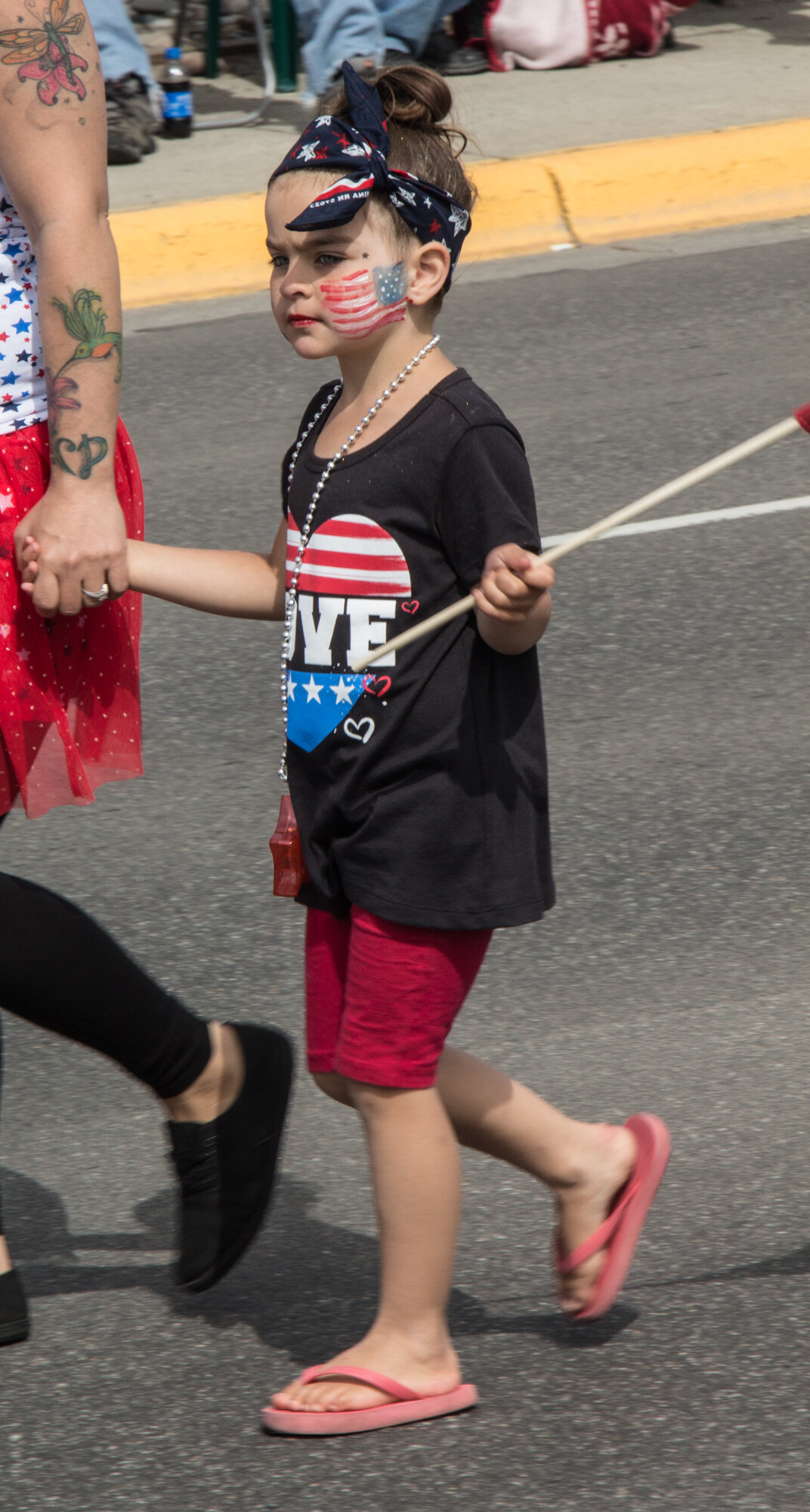Fourth of July in Butte, Montana
When I was a young girl growing up in Butte, Montana, July 4th was one of my favorite holidays. Because my father was city engineer, we had front row seats for the big parade, watching from Mayor Tim Sullivan's office on the second floor of City Hall as the bands and floats made their way down Broadway. There were picnics with family and friends at the Columbia Gardens, the amusement park on the eastside of town. One year, my mother had matching cowboy outfits made for me and my brother—green corduroy with white felt fringe. When the skies began to darken the neighbors would drag their folding chairs to the sidewalks on Woolman Street and the local fathers would orchestrate our very own fireworks show.
With memories such as these it wasn't hard for my sister Dianne to convince me to join her and my nephew Eamon for the 4th of July weekend in Butte in 2018. She wanted to show Eamon where his immigrant grandparents had come when they left Ireland, as he would be going to the old country for a summer program the following year. As further enticement, she added that Butte's parade and fireworks were the biggest and best in the state.
My husband Jeff and I flew into Billings as there are now very few flights into Butte's airport. Driving in, the town looked very much the same as it had during my last visit in June 1994. The "Big M" dominated the hill overlooking the city and the bright white facade of the Immaculate Conception Church, where my parents were married and I received my First Communion, was visible from the highway. On that previous trip, Dianne and I joined my father, our native guide, for our tours around the old neighborhoods and cemeteries. The cousins we visited then are, like Daddy, years buried.
Over the next few days, we retraced the streets of our long ago visit and added a few new stops. The house where I lived on Woolman is still there with its view of the gallows frame of the Anselmo Mine at the end of the block. Grandma Egan's house on Jackson was an abandoned wreck, but my maternal grandparent's home on Silver was in good repair.
Gamer's Cafe looked exactly as I remembered it when my mother would take me to lunch after dance lessons, but they were disappointingly out of pasties, the miner's lunchbox favorite. Pork Chop John's still made a tasty sandwich and Lydia's Supper Club, the special occasion restaurant of my youth, still served a wild array of appetizers including sweet potato salad, which I have never had anywhere else.
While many of the fine residences and civic structures built by the Copper Kings and their associates helped to make Uptown a National Historic Landmark District, the other legacy of the once booming mines is a fading town. Houses in neighborhoods across the city are unoccupied and in disrepair. During the 1970's the site of Columbia Gardens and the Meaderville, McQueen and East Butte neighborhoods were taken over to further excavate the Berkeley Pit. At the time of its opening in 1955, it was the largest truck-operated open pit copper mine in the U.S. Today the pit is a mile long, 50-billion-gallon, toxic lake. It has an eerie beauty and visitors' center with a gift shop. Once "The Richest Hill on Earth" Butte is now home to the largest Superfund site in the country—$150 million—which was finally negotiated in 2020 after 30 years of delay and deliberation.
The 4th of July Parade didn't measure up to my memories, but the indomitable spirit of the town was on full display as floats and firetrucks, young girls in tutus and old gals in boots and hats and a wide range of Butte's citizenry made their way down the Harrison Avenue. When we left town at the end of our holiday weekend, I was nostalgic but also hopeful that with the EPA settlement monies and the legendary determination of the townspeople, there was another chapter to be written in the complicated story of Butte, Montana.
For more about Butte's history and possible futures listen to Nora Saks and the Richest Hill podcast from Montana Public Radio.
Best parade photos courtesy of Jeff Waters.








